Effect of Different Deodorants on SBS-Modified Asphalt Fume Emissions, Asphalt Road Performance, and Mixture Performance
Abstract
1. Introduction
2. Materials and Methods
2.1. Raw Materials and Basic Performance
2.1.1. Asphalt
2.1.2. Deodorants
2.1.3. Sample Preparation
2.2. Fume Collection Process of SBS-Modified Asphalt
- (1)
- Fill the bubble absorption tube with cyclohexane solvent to a volume of 10 mL;
- (2)
- Add a certain mass of asphalt to the three-neck flask and insert the stirrer;
- (3)
- Press the heating jacket heating button, control the stirrer speed to 300 r/min, maintain the temperature at 180 °C once the asphalt reaches this temperature, and start timing.
- (4)
- After 1 h, immediately connect the bubble absorption tube to the right port of the three-neck flask using a silicone tube, and activate the sampling pump to draw gas at a rate of 500 mL/min;
- (5)
- After sampling for 15 min, shut off the sampling pump, disconnect the bubble absorption tube from the three-neck flask, mix the cyclohexane solutions enriched with asphalt fumes from both bubble absorption tubes, pour into a brown reagent bottle, shake well, and store at 1 °C to minimize cyclohexane evaporation during storage.
2.3. Ultraviolet-Visible (UV) Spectrophotometry
2.4. Fluorescence Microscopy Analysis
2.5. Asphalt Physical Properties Test
2.6. Asphalt Mixture Road Performance Test
3. Results and Discussions
3.1. Composition of Asphalt Fumes Before and After Adding Deodorant
3.1.1. Analysis of UV Spectrophotometric Test
3.1.2. GC-MS Test Result Analysis
3.2. Analysis of Fluorescence Microscopy Test
3.3. Analysis of Asphalt Physical Properties Test
3.4. Analysis of Road Performance of Asphalt Mixture
4. Conclusions
- (1)
- Deodorants can effectively reduce emissions of VOCs, CO, H2S, NO, and SO2, with the optimal dosage of deodorant A (reactive type) being 0.6% and that of deodorant D (adsorptive type) being 0.5%. At these dosages, the total flue gas emission reduction rate exceeds 50%, with VOCs (accounting for approximately 60% of total emissions) achieving a reduction rate of 40–70%. Notably, high-odor compounds such as benzene homologues and ethyl mercaptan can achieve removal rates as high as 70%, confirming targeted inhibition of harmful substances.
- (2)
- Deodorant A decomposes volatile components by chemically reacting with odor molecules (such as aromatic hydrocarbons and esters). Deodorant D captures harmful gases through physical adsorption, utilizing its specific surface area. Fluorescence microscopy observations show that deodorant D better preserves the SBS network structure, while deodorant A causes minor structural damage. This phenomenon aligns with the adsorption and reaction mechanisms of both agents. Both additives enhance intermolecular cohesion and inhibit the volatilization of small molecules.
- (3)
- Deodorants have minimal impact on the basic properties of asphalt: permeability and extensibility decrease slightly (<3%), while the softening point and aging resistance (residual permeability/extensibility) improve slightly. For asphalt mixtures, high-temperature rutting resistance (dynamic stability) improved by 7.87–9.59%, water stability (immersion residual stability) improved by 2.27–5.15%, and low-temperature crack resistance remained unchanged (deodorant A) or slightly improved (deodorant D). All performance indicators meet technical specifications, confirming their practical applicability.
- (4)
- The source and processing technology of SBS-modified asphalt can affect flue gas components and concentrations, even for the same type of asphalt. This highlights the necessity of adding appropriate amounts of deodorants during asphalt processing and mixing.
- (5)
- Deodorants achieve efficient flue gas emissions reduction while maintaining asphalt performance, making them suitable for environmentally friendly road construction. Future research should explore their applicability in other asphalt types (such as rubber-modified asphalt) and optimize formulations to accommodate a broader range of road asphalt sources.
Author Contributions
Funding
Data Availability Statement
Conflicts of Interest
References
- Pan, P.; Wu, S.; Xiao, Y.; Liu, G. A review on hydronic asphalt pavement for energy harvesting and snow melting. Renew. Sustain. Energy Rev. 2015, 48, 624–634. [Google Scholar] [CrossRef]
- Wang, M.; Li, P.; Nian, T.F.; Mao, Y. An overview of studies on the hazards, component analysis and suppression of fumes in asphalt and asphalt mixtures. Constr. Build. Mater. 2021, 289, 123185. [Google Scholar] [CrossRef]
- Yue, T.T.; Yue, X.; Chai, F.; Hu, J.; Lai, Y.; He, L.; Zhu, R. Characteristics of volatile organic compounds (VOCs) from the evaporative emissions of modern passenger cars. Atmos. Environ. 2017, 151, 62–69. [Google Scholar] [CrossRef]
- Kumar, A.P.; Singh, D.; Kumar, K.; Singh, B.B.; Jain, V.K. Distribution of VOCs in urban and rural atmospheres of subtropical India: Temporal variation, source attribution, ratios, OFP and risk assessment. Sci. Total Environ. 2018, 613–614, 492–501. [Google Scholar] [CrossRef] [PubMed]
- Fan, Y.S.; Chen, M.Z.; Yang, X.Y.; Zhang, J.W.; He, J.; Han, M.Y. Investigation on physical, rheological properties and VOCs emission of asphalt modified with hydrocarbon-based graphene. Constr. Build. Mater. 2025, 469, 140474. [Google Scholar] [CrossRef]
- Chauhan, S.K.; Sharma, S.; Shukla, A.; Gangopadhyay, S. Recent trends of the emission characteristics from the road construction industry. Environ. Sci. Pollut. Res. 2010, 17, 1493–1501. [Google Scholar] [CrossRef] [PubMed]
- Wu, X.; Liu, S.; Zhang, J.; Li, Z.; Ning, A. Research status and development of asphalt flue gas treatment technology. Pet. Asph. 2021, 35, 1–5. [Google Scholar]
- Chong, D.; Wang, Y.H.; Zhao, K.; Wang, D.; Oeser, M. Asphalt fume exposures by pavement construction workers: Current status and project case. J. Constr. Eng. Manag. 2018, 144, 1–12. [Google Scholar] [CrossRef]
- Li, L.W.; Wang, P.; Zhou, T.; Cao, L.P.; Ding, X.; Zhang, B.T.; Wei, L.D. Performance evaluation and multiscale investigation of deodorant on mechanism of rubber modified asphalt. J. Clean. Prod. 2023, 425, 138954. [Google Scholar] [CrossRef]
- Guo, Y.N.; Zhao, Y.; Sun, L.H.; Xu, X.C.; Zhang, H.C. Characterization of Fume Suppression Effect and Performance of SBS-Modified Asphalt with Deodorant. Processes 2024, 12, 2603. [Google Scholar] [CrossRef]
- Zhu, C.Z.; Li, D.Q.; Zhang, H.L.; Guo, X.G.; Xu, F.; Xiao, F.P.; Amir Khanian, S.; Zhang, D.M. Effect of microwave and deodorant treatments on long-term aging characteristics of crumb rubber modified asphalt. Case Stud. Constr. Mater. 2024, 21, e03620. [Google Scholar]
- Cao, L.P.; Yang, C.; Li, A.; Wang, P.; Zhang, Y.; Dong, Z.J. Flue gas composition of waste rubber modified asphalt (WRMA) and effect of deodorants on hazardous constituents and WRMA. J. Hazard. Mater. 2021, 403, 123814. [Google Scholar] [CrossRef]
- Zhao, H.W.; Chen, A.Q.; Wu, S.P.; Xu, H.Q.; Wang, H.; Wang, H.; Lyu, Y.L.; Yang, L. Synergistic Reduction in Asphalt VOC Emissions by Hydrochloric Acid-Modified Zeolite and LDHs. Materials 2024, 17, 5664. [Google Scholar] [CrossRef]
- Li, L.; Wu, S.; Liu, G.; Cao, T.; Amirkhanian, S. Effect of organo-montmorillonite nanoclay on VOCs inhibition of bitumen. Constr. Build. Mater. 2017, 146, 429–435. [Google Scholar] [CrossRef]
- Idris, N.F.; Le-Minh, N.; Hayes, J.E.; Stuetz, R.M. Performance of wet scrubbers to remove VOCs from rubber emissions. J. Environ. Manag. 2022, 305, 114426. [Google Scholar] [CrossRef] [PubMed]
- Zhou, X.; Moghaddam, T.B.; Chen, M.; Wu, S.; Adhikari, S. Biochar removes volatile organic compounds generated from asphalt. Sci. Total Environ. 2020, 745, 141096. [Google Scholar] [CrossRef] [PubMed]
- Zhou, X.; Shi, L.; Moghaddam, T.B.; Chen, M.; Wu, S.; Yuan, X. Adsorption mechanism of polycyclic aromatic hydrocarbons using wood waste-derived biochar. J. Hazard. Mater. 2022, 425, 128003. [Google Scholar] [CrossRef]
- Qin, Q.; Farrar, M.J.; Pauli, A.T.; Adams, J.J. Morphology, thermal analysis and rheology of Sasobit modified warm mix asphalt binders. Fuel 2014, 115, 416–425. [Google Scholar] [CrossRef]
- Yu, H.Y.; Leng, Z.; Dong, Z.J.; Tan, Z.F.; Guo, F.; Yan, J.H. Workability and mechanical property characterization of asphalt rubber mixtures modified with various warm mix asphalt additives. Constr. Build. Mater. 2018, 175, 392–401. [Google Scholar] [CrossRef]
- Jin, J.; Liu, M.H.; Liu, S.; Chen, B.Z.; Liu, X.Y. Study on CeO2 Pillared Montmorillonite Modified Asphalt and Its Catalytic Performance Based on the Emission Reduction of Ecological Pavement. Mater. Rev. 2023, 36, 26–32. [Google Scholar]
- Li, P.T.; Guan, B.W.; Huang, Z.H.; Liu, M.; Ma, Z.X.; Zhou, C.; Ma, X.Y.; Nian, J.N. Effect of layered double hydroxides on the VOCs emission and the properties of SBS modified asphalt. Constr. Build. Mater. 2024, 439, 137398. [Google Scholar] [CrossRef]
- Zhao, Z.G.; Wang, Z.P.; Wu, S.P.; Xie, J.; Yang, C.; Li, N.; Cui, P.D. Road performance, VOCs emission and economic benefit evaluation of asphalt mixture by incorporating steel slag and SBS/CR composite modified asphalt. Case Stud. Constr. Mater. 2023, 18, 01929. [Google Scholar] [CrossRef]
- JTG E20-2011; Standard Test Methods of Bitumen and Bituminous Mixtures for Highway Engineering. China Communications Press: Beijing, China, 2011.
- US Environmental Protection Agency (EPA). Determination of Total Gaseous Organic Concentration Using a Flame Ionization Analyzer: Method 25A[S]; U.S. Environmental Protection Agency: Washington, DC, USA, 2012. [Google Scholar]
- Xu, X.; Guo, H.Y.; Wang, X.F.; Zhang, M.X.; Wang, Z.J.; Yang, B. Physical properties and anti-aging characteristics of asphalt modified with nano-zinc oxide powder. Constr. Build. Mater. 2019, 224, 732–742. [Google Scholar] [CrossRef]
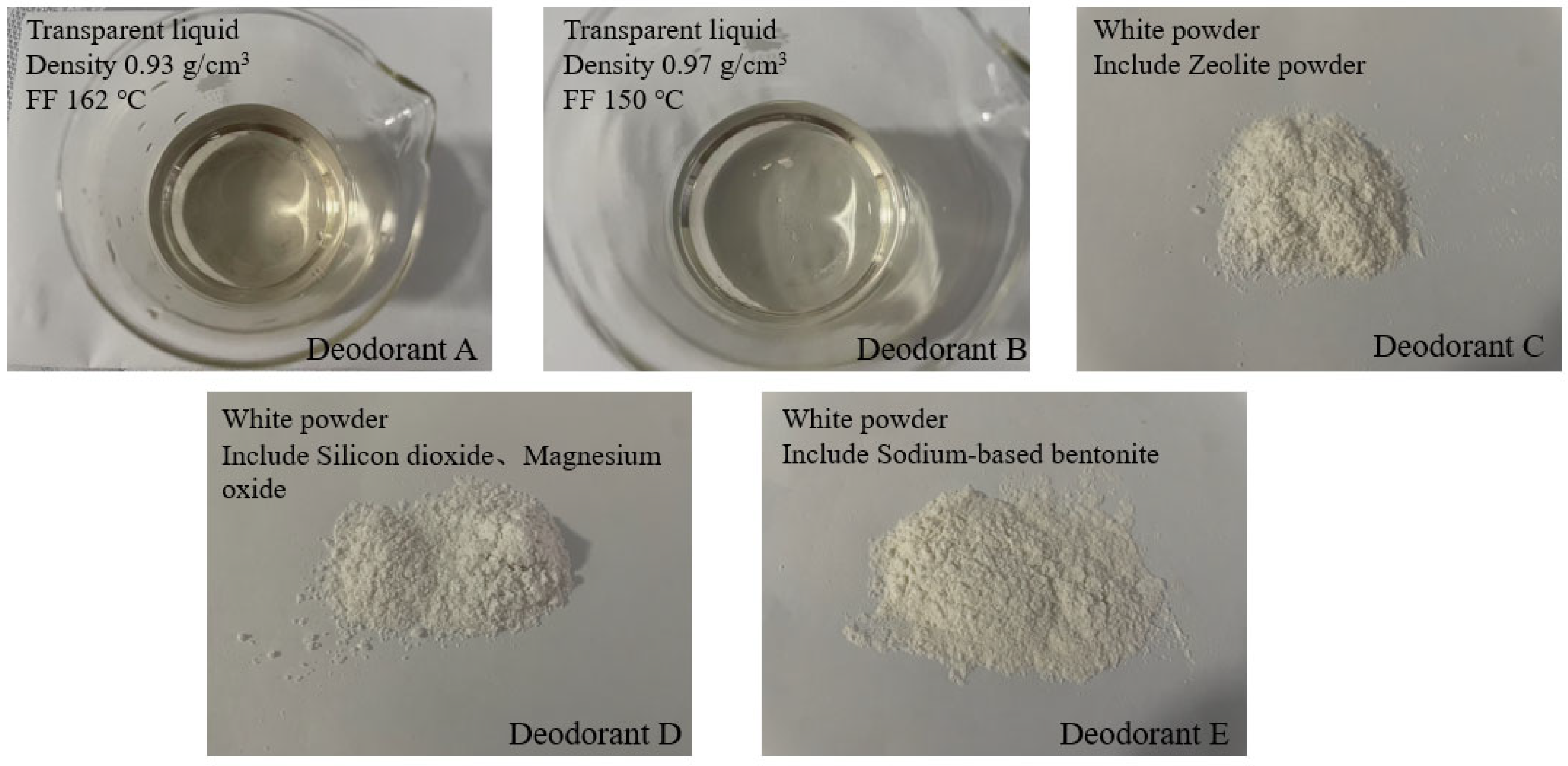
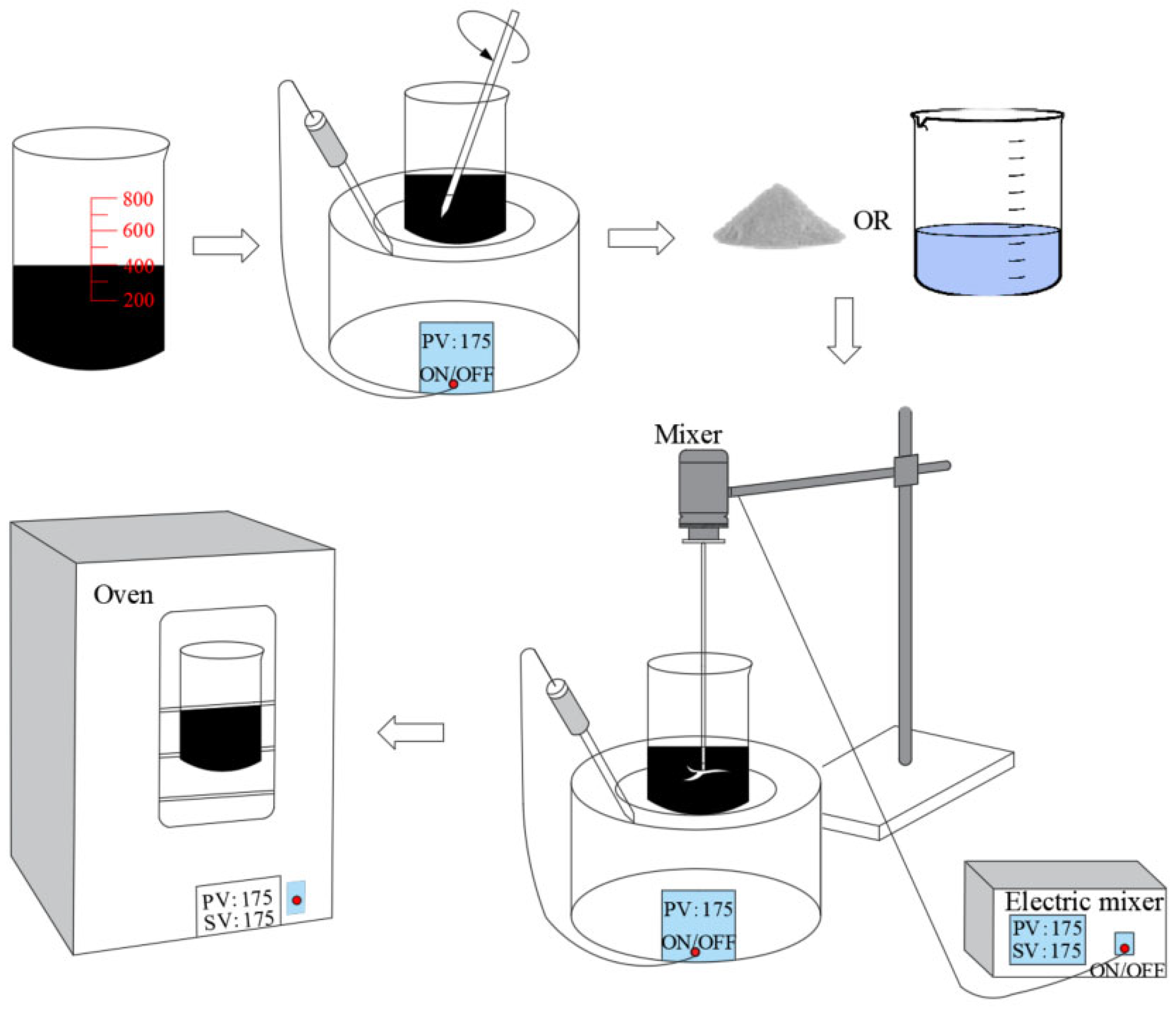
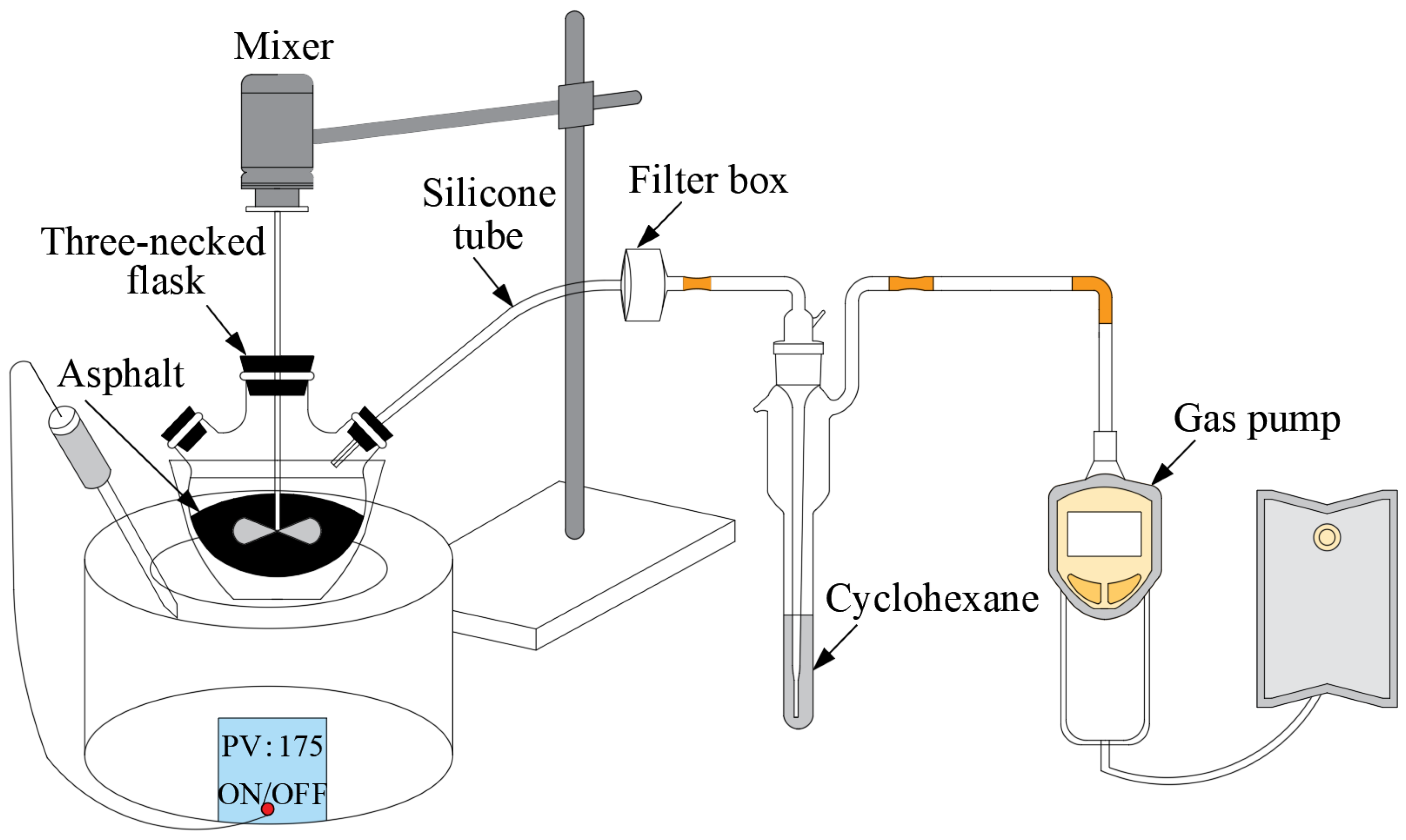
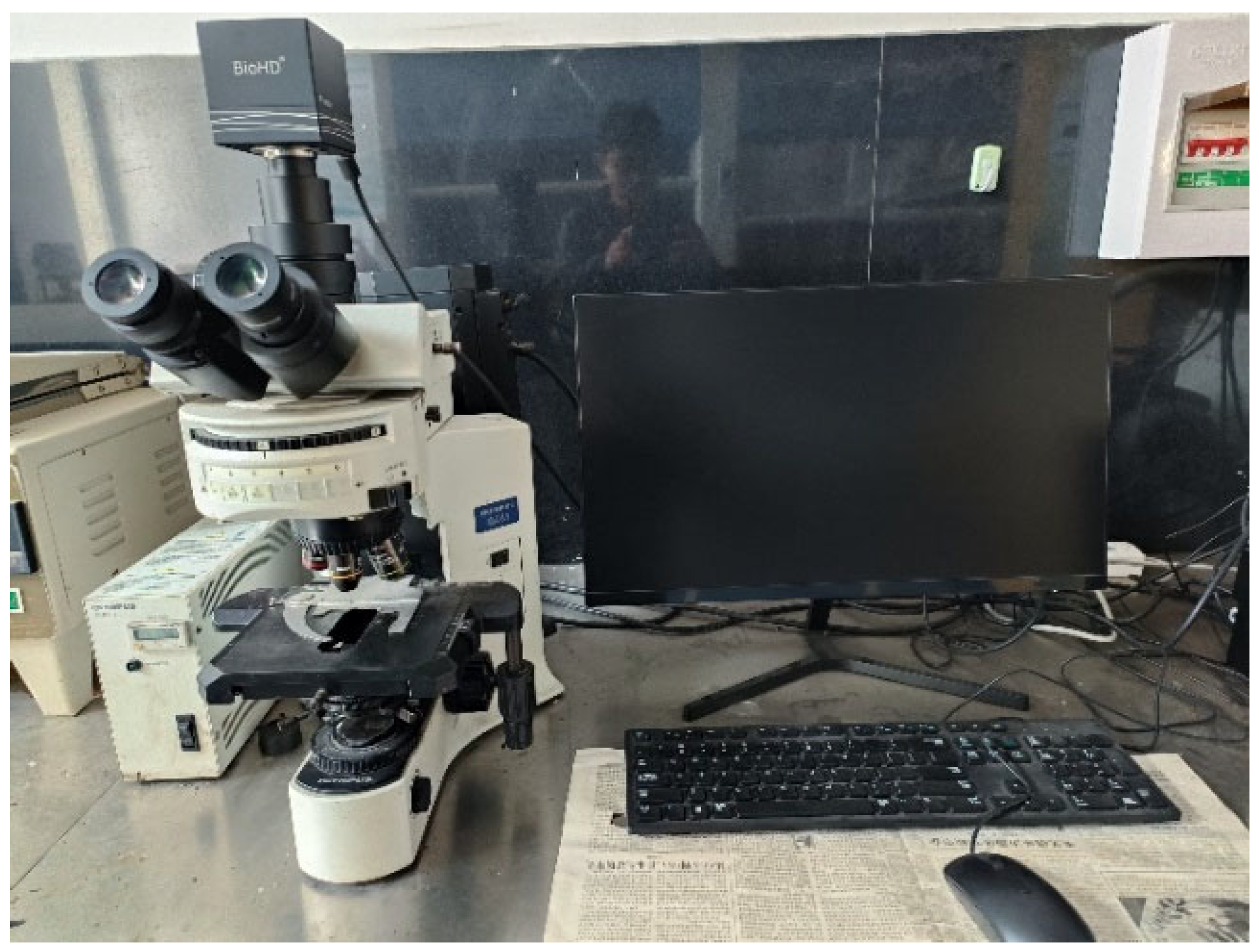
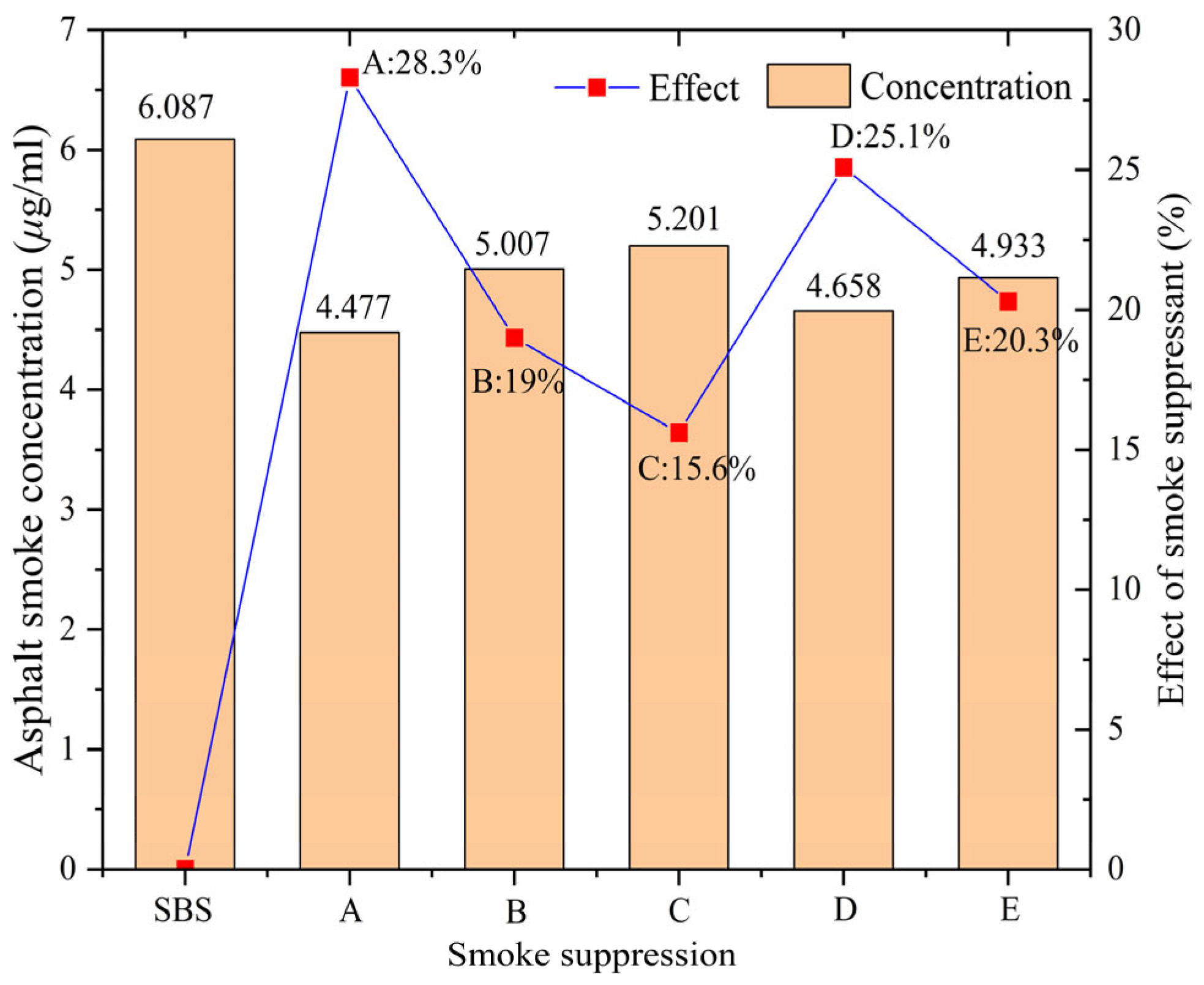
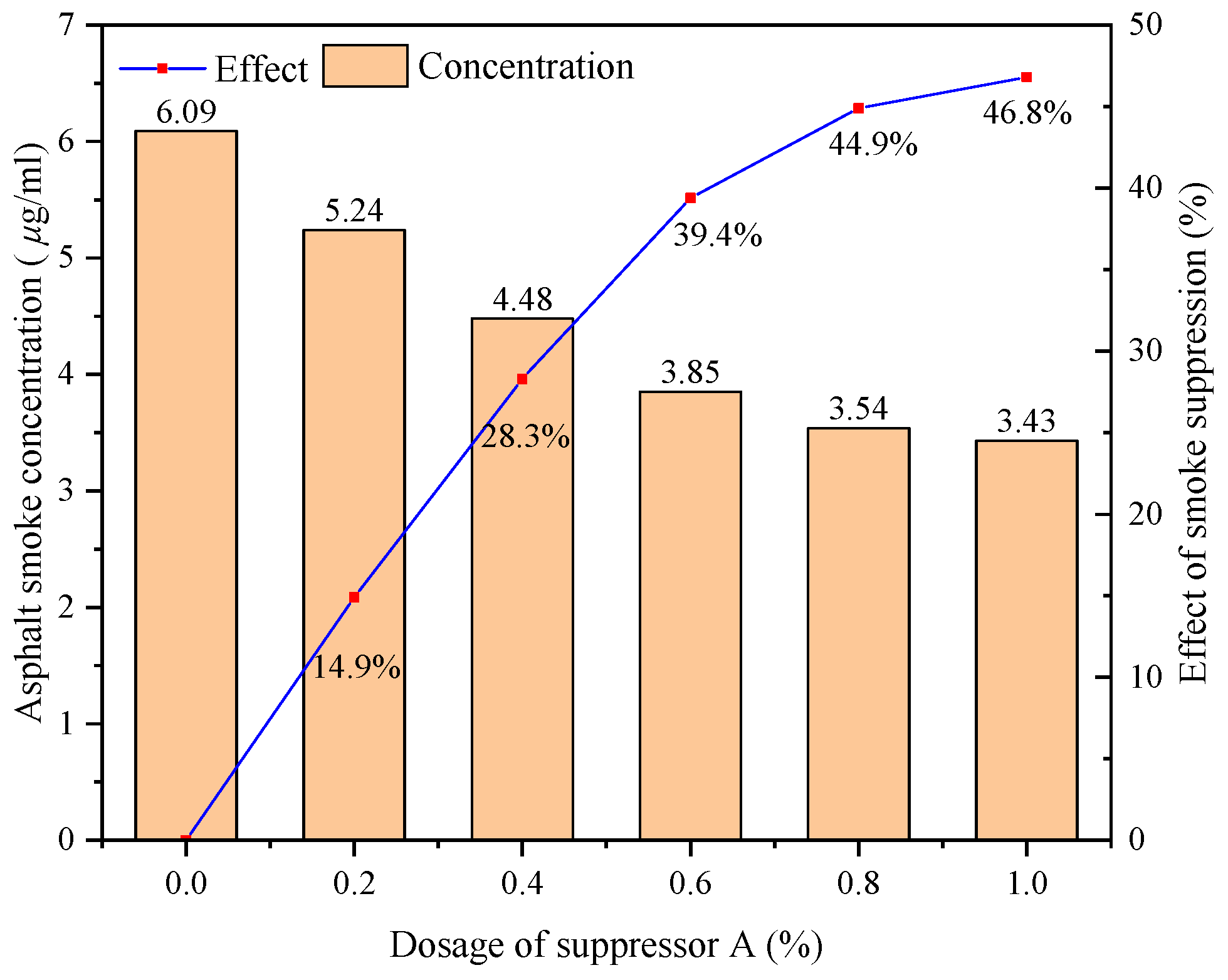
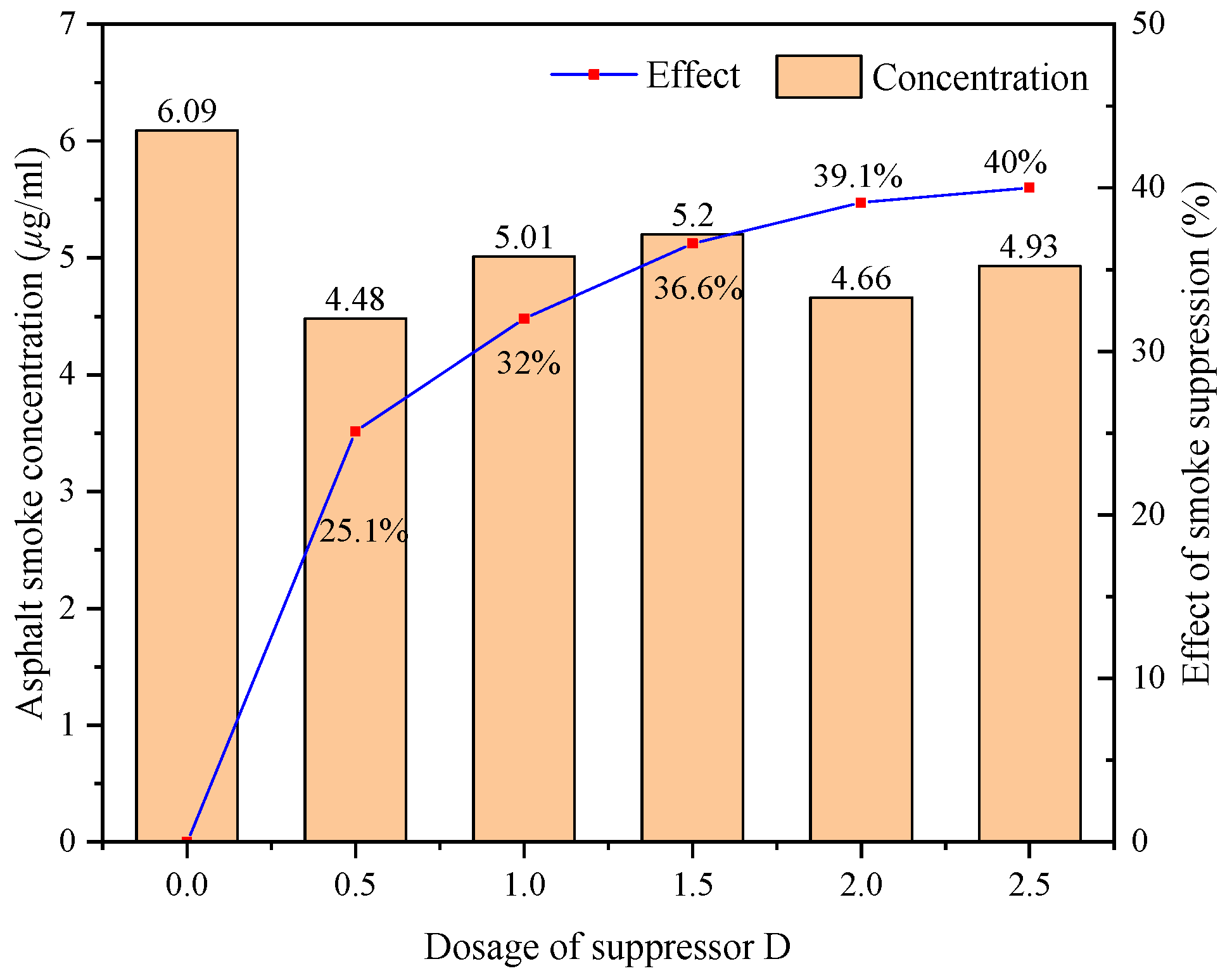
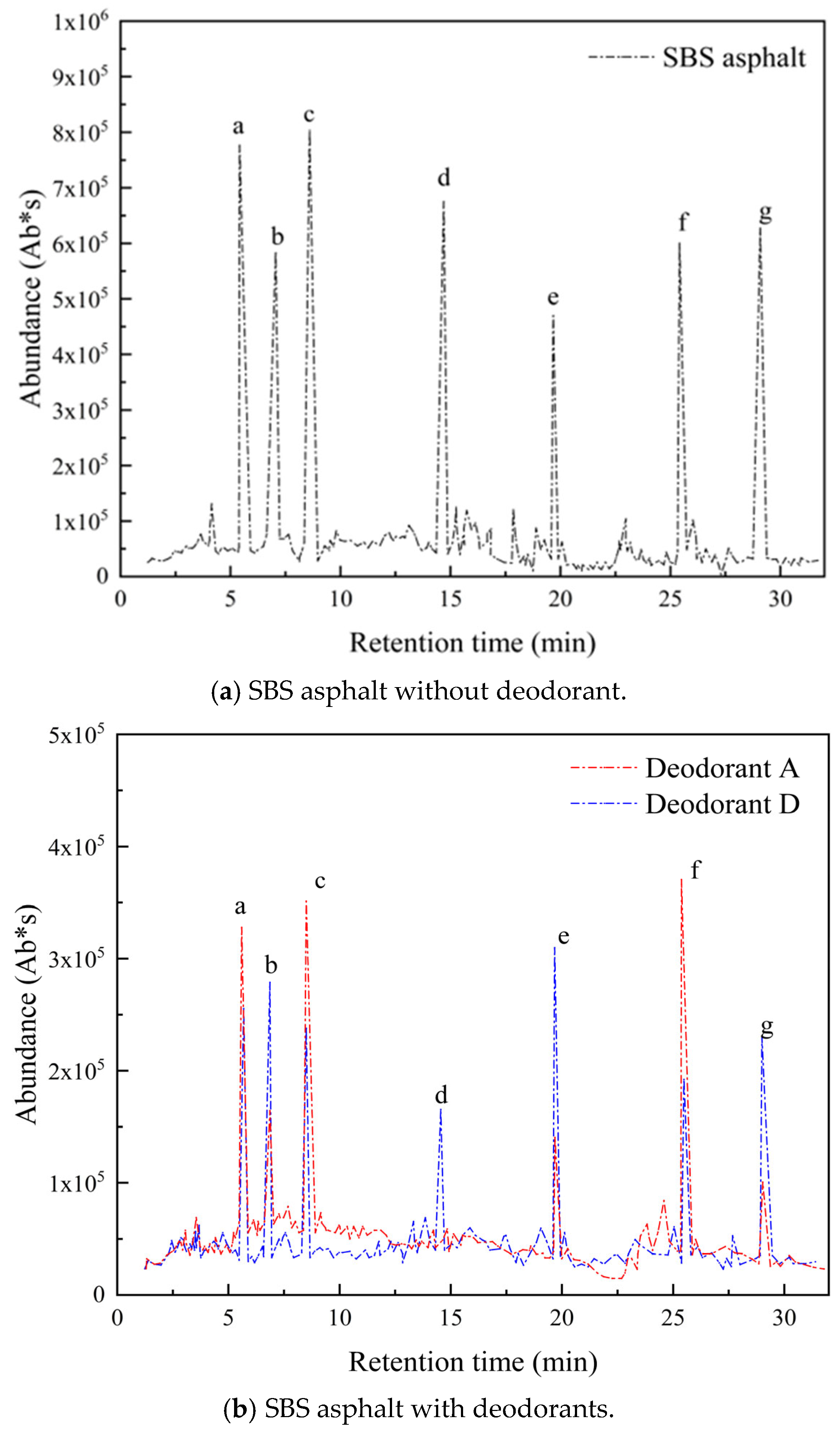
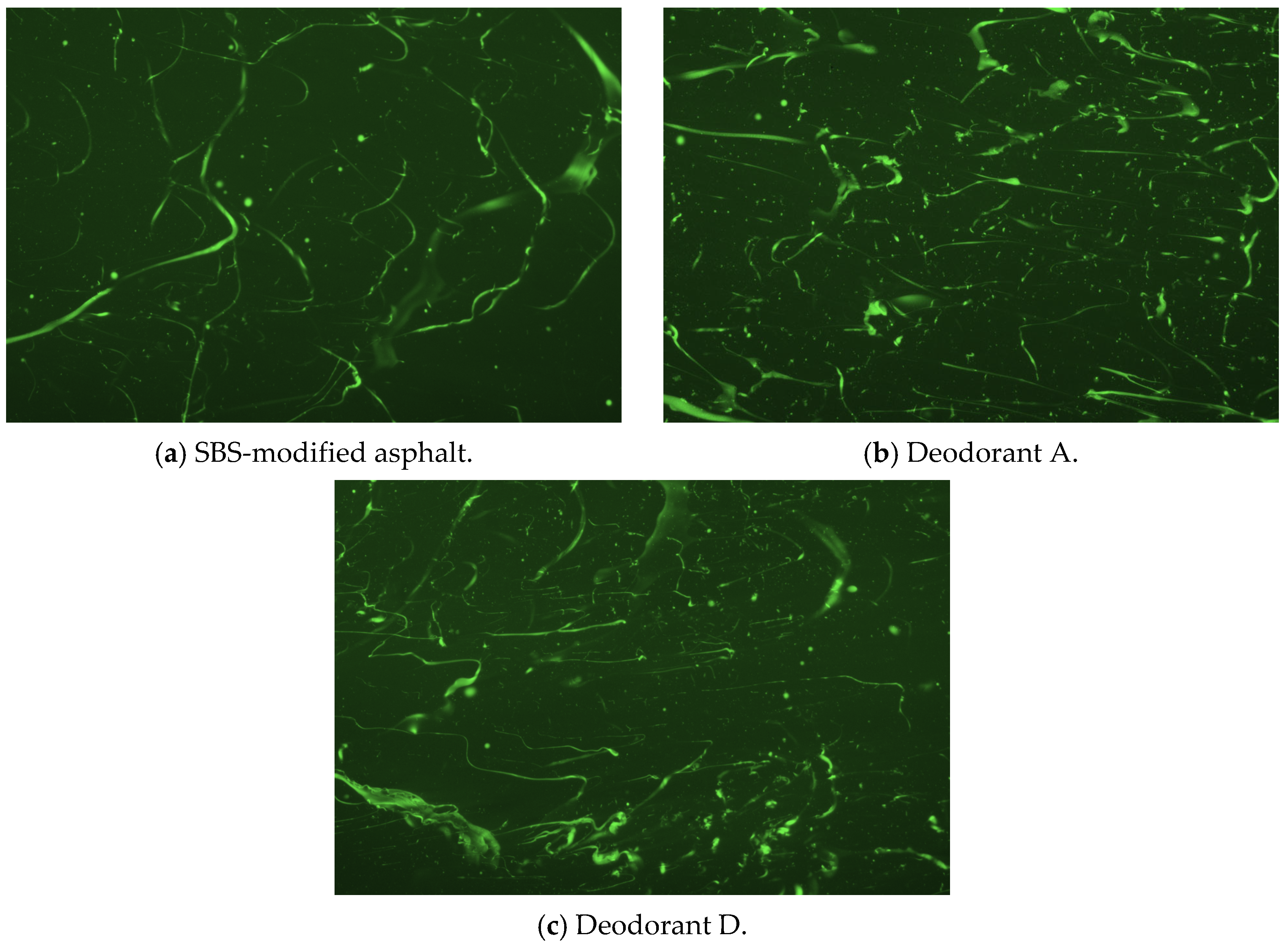
| Asphalt Testing Items | SBS | SBS+A | SBS+D | Requirements [23] | Standard | |
|---|---|---|---|---|---|---|
| Penetration (25 °C, 5 s, 100 g) (0.1 mm) | 52.5 | 50.8 | 51.4 | 40~60 | ASTM D5 | |
| Softening point (TR&B) (°C) | 83.3 | 85.2 | 84.5 | ≥60 | ASTM D36 | |
| Ductility (5 cm/min 5 °C, cm) | 25.9 | 24.9 | 24.1 | ≥20 | ASTM D113 | |
| RTFOT | Change of mass (%) | −0.24 | −0.236 | −0.238 | ≤±1.0 | ASTM D2872 |
| Residual penetration ratio (25 °C) (%) | 73.7 | 74.8 | 74.2 | ≥65 | ASTM D2872 | |
| Residual ductility (5 °C) (cm) | 20.3 | 22.1 | 20.9 | ≥15 | ASTM D2872 | |
| Retention Time (min) | Simplified Symbol | Substance |
|---|---|---|
| 5.54 | a | 1,2,3-Trimethylbenzene |
| 6.78 | b | p-Xylene |
| 8.49 | c | o-xylene |
| 14.76 | d | 2-Methylnaphthalene |
| 20.96 | e | 3′-Methylacetanilide |
| 26.73 | f | Methyl stearate |
| 29.76 | g | 6-tert-butyl-4-methylphenol |
| Asphalt Testing Items | SBS | SBS+A | SBS+D | Standard |
|---|---|---|---|---|
| Rutting dynamic stability | 5439 | 5867 | 5961 | ASTM D6373 |
| Maximum bending strain (με) | 3560 | 3156 | 3805 | ASTM D7405 |
| Water immersion residual stability (%) | 86.7 | 91.2 | 88.1 | ASTM D1075 |
| Free-thaw splitting strength ratio (%) | 82.3 | 85.9 | 84.6 | ASTM D6931 |
Disclaimer/Publisher’s Note: The statements, opinions and data contained in all publications are solely those of the individual author(s) and contributor(s) and not of MDPI and/or the editor(s). MDPI and/or the editor(s) disclaim responsibility for any injury to people or property resulting from any ideas, methods, instructions or products referred to in the content. |
© 2025 by the authors. Licensee MDPI, Basel, Switzerland. This article is an open access article distributed under the terms and conditions of the Creative Commons Attribution (CC BY) license (https://creativecommons.org/licenses/by/4.0/).
Share and Cite
Sheng, Z.; Yan, N.; Zhao, X. Effect of Different Deodorants on SBS-Modified Asphalt Fume Emissions, Asphalt Road Performance, and Mixture Performance. Processes 2025, 13, 2485. https://doi.org/10.3390/pr13082485
Sheng Z, Yan N, Zhao X. Effect of Different Deodorants on SBS-Modified Asphalt Fume Emissions, Asphalt Road Performance, and Mixture Performance. Processes. 2025; 13(8):2485. https://doi.org/10.3390/pr13082485
Chicago/Turabian StyleSheng, Zhaoyan, Ning Yan, and Xianpeng Zhao. 2025. "Effect of Different Deodorants on SBS-Modified Asphalt Fume Emissions, Asphalt Road Performance, and Mixture Performance" Processes 13, no. 8: 2485. https://doi.org/10.3390/pr13082485
APA StyleSheng, Z., Yan, N., & Zhao, X. (2025). Effect of Different Deodorants on SBS-Modified Asphalt Fume Emissions, Asphalt Road Performance, and Mixture Performance. Processes, 13(8), 2485. https://doi.org/10.3390/pr13082485





